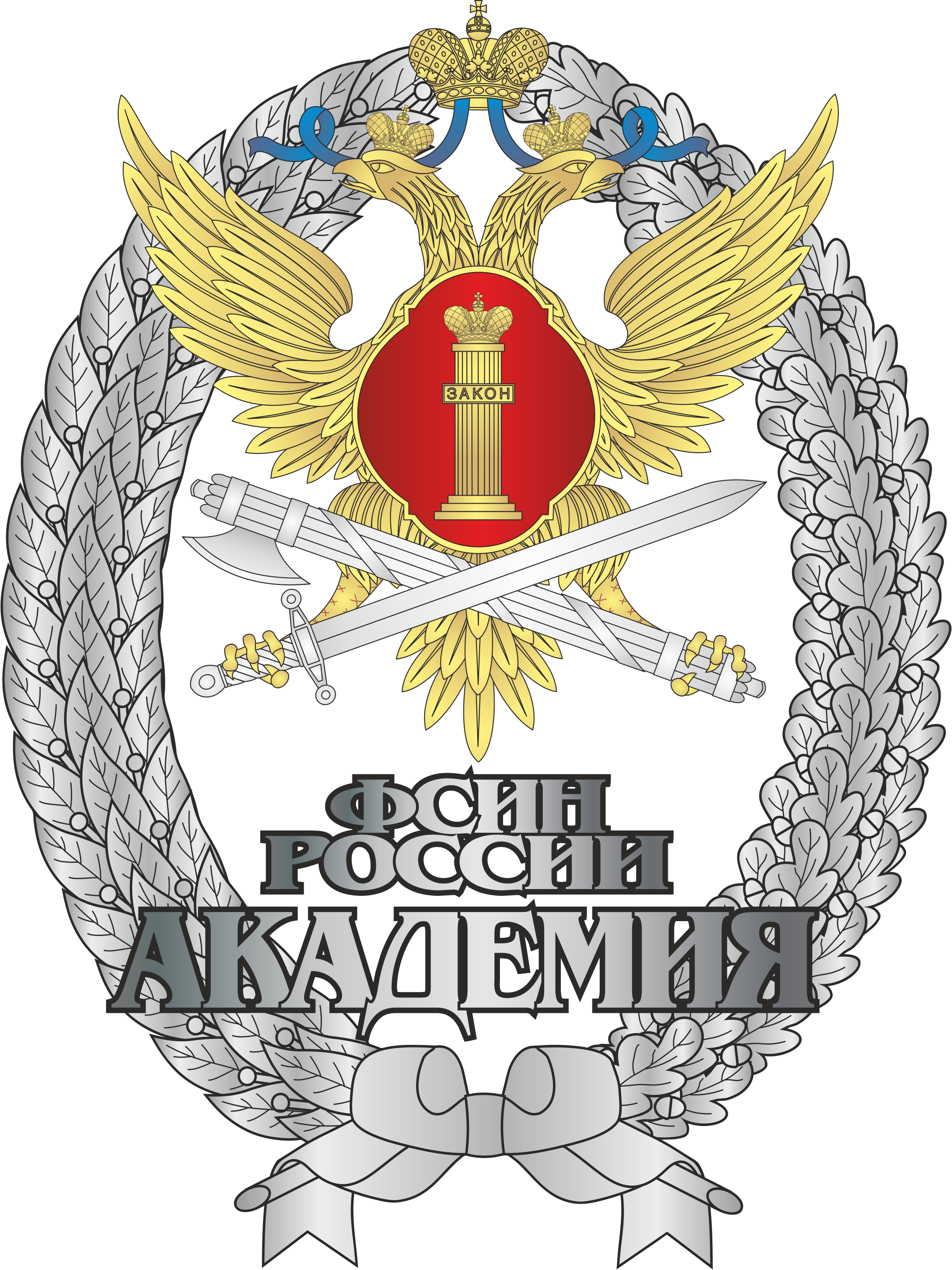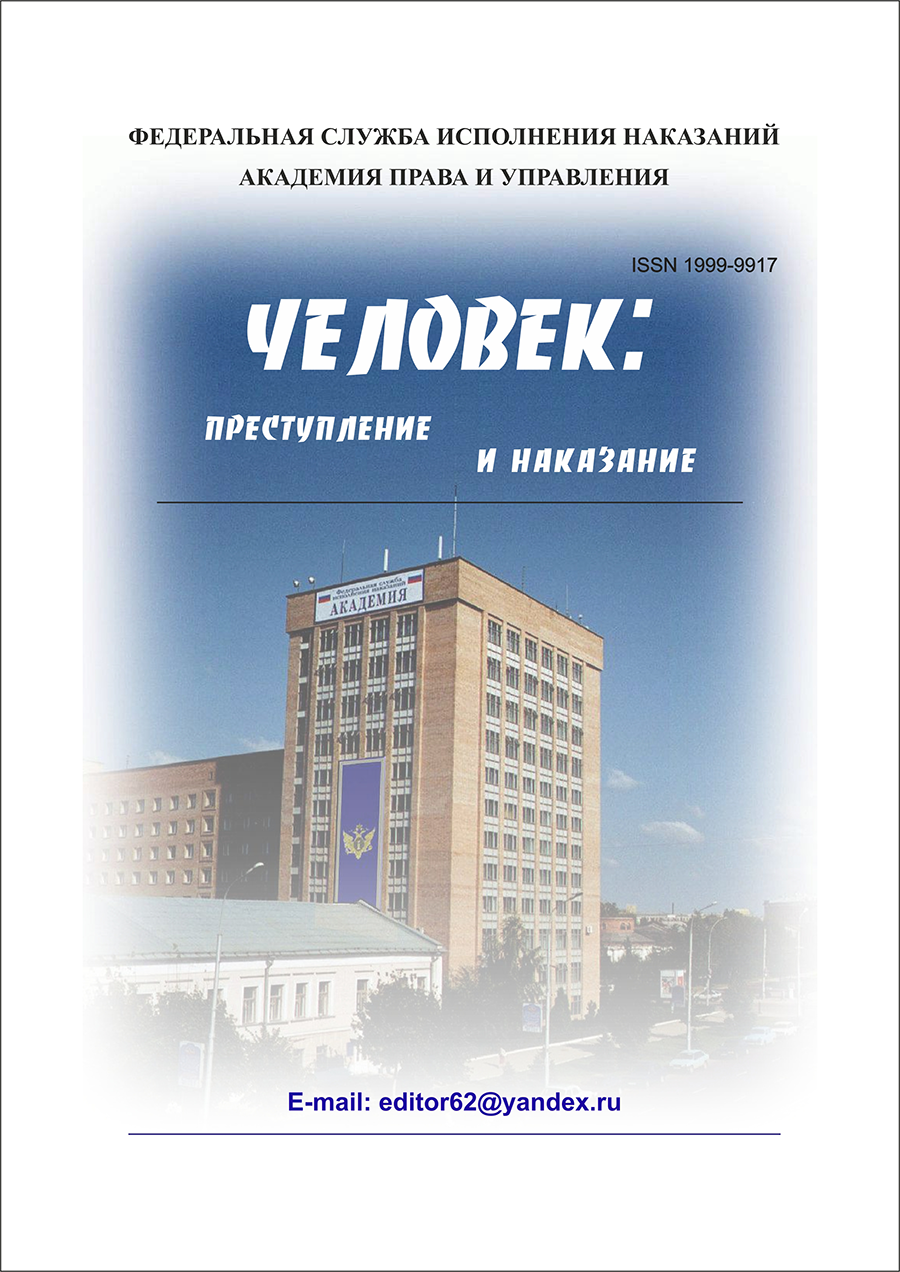The relationship of the antisocial position of the individual with illegal behavior has been repeatedly described in the scientific literature. But, despite the importance of studying the antisocial position of the individual, a generally accepted empirically based concept of this phenomenon has not yet been created, its psychological characteristics still remain insufficiently investigated.This makes it impossible to conduct scientifically based work on the psychological correction of the antisocial personality position of offenders, including convicts. The object of the study is the psychological content of the antisocial personality position in juvenile convicts. The purpose of the study is to study the key components, psychological determination and dynamics of the development of the antisocial personality position in juvenile convicts. Research methods: The method of color metaphors (MCM), the method of "Subjective assessment of integration" (SOI), the method of "Unfinished sentence", the projective method of "Find yourself", the analysis of personal affairs and structured interview. Methods of statistical data processing - cluster analysis procedures. The sample size of the study is 214 respondents. The main conclusions of the study: 1) the basis of the antisocial position of the personality of juvenile convicts as an established negative attitude towards society, expressed in illegal behavior, are emotions of sadness and anger resulting from the deprivation of the social needs of adolescents; 2) the cognitive component of the antisocial position is the awareness of contradictions with society and isolation from it; 3) the most common manifestation of an antisocial personality position is a behavioral avoidance strategy. In addition, other components of the antisocial positionof the individual, which are often found in juvenile convicts, such as: feelings of disgust and contempt, feelings of alienation from society and the threat emanating from it, are established. The analysis also showed that in a number of cases juvenile offenders transferred to the victims, the negative feelings they had towards society. Respondents often deny their similarity to other members of society and the existence of common goals. The results obtained have practical significance in the context of their use by psychologists of educational colonies to identify and psychologically correct the personality of juvenile convicts with an antisocial position.
antisocial personality position, juvenile convicts, correction, educational colony, psychological diagnostics
1. Abul'hanova-Slavskaya K. A. Deyatel'nost' i psihologiya lichnosti. M. : Nauka, 1980. 335 s
2. Ignatenko V. I. Antiobschestvennyy obraz zhizni nesovershennoletnih kak kategoriya kriminologii // Chelovek: prestuplenie i nakazanie. 2011. № 3(74). S. 114-118
3. Izard K. E. Psihologiya emociy. SPb. : Piter, 2000. 464 s
4. Momdzhyan K. H. K tipologii chelovecheskih potrebnostey. Stat'ya 3. Social'nye potrebnosti cheloveka. Chast' 2 // Vestnik Moskovskogo universiteta. Ser. 7. Filosofiya. 2017. № 2. S. 99-112
5. Ovcharova R. V., Malyushina Yu. A. Kriminal'naya motivaciya nesovershennoletnih pravonarushiteley i ee korrekciya. Kurgan : KGU, 2011. 176 s
6. Omel'chenko E. L. Molodezhnye kul'tury i subkul'tury. M. : Institut sociologii RAN, 2000. 262 s
7. Omigov V. I. Osobennosti protivodeystviya prestupnosti nesovershennoletnih // Rossiyskaya yusticiya. 2012. № 1. S. 22-26
8. Oferkina O. A. Social'no-psihologicheskaya profilaktika asocial'nogo povedeniya podrostkovyh grupp : avtoref. dis. ... kand. psihol. nauk. M., 2013. 22 s
9. Pirozhkov V. F. Zakony prestupnogo mira molodezhi (kriminal'naya subkul'tura). Tver', 1994. 135 s
10. Pobegaylo A. E. Semeynoe neblagopoluchie i nesovershennoletniy prestupnik / pod red. M. M. Babaeva. Stavropol' : Servisshkola, 2006. 202 s
11. Solomin I. L., Chernyshkova M. P., Suvorina N. Yu. Ispol'zovanie metodiki cvetovyh metafor (MCM) I. L. Solomina v praktike psihologov UIS. SPb., 2012. 69 s
12. Chvanov N. A. Nravstvenno-psihologicheskie harakteristiki lichnosti nesovershennoletnih delinkventov // Vestnik Kemerovskogo gosudarstvennogo universiteta. 2015. T. 4, № 1(61). S. 131-134
13. Cargill, R. 2004, Antisocial attitudes and antisocial behaviour : an investigation of antisocial attitudes in a New Zealand non-offender sample : a thesis presented in partial fulfillment of the requirements for the degree of Master of Arts in Psychology at Massey University, Massey University, http://hdl.handle.net/10179/8419
14. Costaris, M., Peterson-Badali, M. & Skilling, T. A. 2022, ‘A Latent Class Analysis of the Antisocial Attitudes Domain of the Youth Level of Service / Case Management Inventor y’, Criminal Justice and Behavior, vol. 49, iss. 8, pp. 1192-1209, doi:https://doi.org/10.1177/00938548221084301
15. Juarez, T. & Howard, M. V. A. 2021, ‘Self-Reported Change in Antisocial Attitudes and Reoffending Among a Sample of 2,337 Males Convicted of Violent Offenses’, Criminal Justice and Behavior, vol. 49, iss. 1, pp. 3-19
16. Locklair, B. R. 2018, Beyond self-report: Construction and validation of the Implicit Test of Antisocial Attitudes, Drexel University. https://doi.org/10.17918/D8J38F
17. Mills, J. F., Kroner, D. G. & Hemmati, T. 2004, ‘The Measures of Criminal Attitudes and Associates (MCAA): The Prediction of General and Violent Recidivism’, Criminal Justice and Behavior, vol. 31, iss. 6, pp. 717-733
18. Pavić, Ž. 2021, ‘The Impact of Civic and Religious Social Capital on the Antisocial Attitudes of the Youth: A Multi-Level Cross-National Study’, Societies, vol. 11 iss. 3, p. 110, https://doi.org/10.3390/soc11030110









